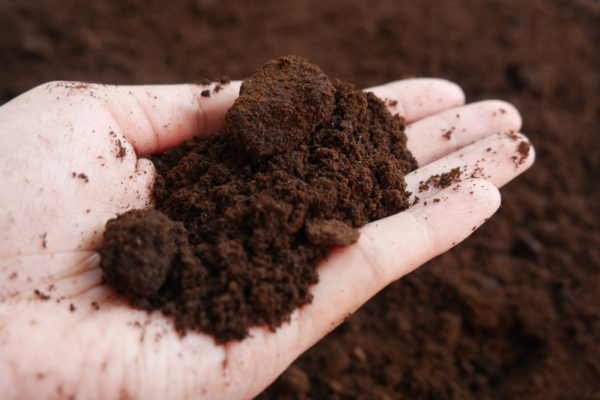Coffee grounds, although considered waste, should not be casually discarded, as they have many practical uses in household life, especially in gardening. Proper use of coffee grounds in the garden can bring numerous benefits.
According to the gardening website “Garden Design,” most gardening enthusiasts are aware of the benefits of coffee grounds for plants, but their use in the garden is a topic of debate. Some praise their advantages, while others warn of potential negative effects. It all depends on how you utilize them.
When used correctly, coffee grounds have many advantages in the garden. Before using coffee grounds in the garden or adding organic matter, it is essential to test the soil’s pH level and understand its nutritional needs.
Coffee grounds can improve soil structure and provide nutrients to plants. During decomposition, they release nitrogen, an essential nutrient for healthy leaf growth. They are also a source of other essential nutrients like potassium and phosphorus, as well as trace nutrients such as boron, calcium, copper, iron, magnesium, and zinc.
Feeding earthworms – Earthworms enjoy consuming coffee grounds. These beneficial creatures produce nutrient-rich waste that aerates the soil, aids in compost decomposition, and provides nutrients for plant uptake.
Reducing waste – Using coffee grounds in the garden is a form of recycling. Coffee shops are a great source of discarded coffee grounds and are often willing to give them away for free. If this waste is not repurposed, it will eventually end up in landfills.
Aiding disease control – Research has shown that the decomposition of coffee grounds produces beneficial bacterial and fungal species that can help prevent harmful diseases and fungal growth.
Improving soil structure and drainage – Compacted soil, excessive moisture, or poor drainage can lead to issues like root rot. By thoroughly mixing coffee grounds into the soil, their coarse texture can enhance soil aeration, allowing water and nutrients to reach plant roots more effectively.
Retaining moisture – Incorporating coffee grounds into the soil can enhance water retention, benefiting moisture-loving plants such as hydrangeas, bananas, hibiscus, azaleas, primroses, and bugleweed. However, avoid using coffee grounds in landscapes with abundant water resources or around low-water plants.
Assisting composting – Coffee grounds can help maintain the ideal temperature for organic matter decomposition in compost heaps by releasing nitrogen to generate heat and accelerate breakdown. The nitrogen in coffee grounds also promotes the growth of beneficial soil microbes.
Serving as fertilizer – When coffee grounds are directly added to the soil, they slowly release nutrients over time, providing plants with essential nutrients.
May inhibit plant growth – Coffee grounds can inhibit seed germination and cause poor plant development. Therefore, it is advisable to avoid using coffee grounds around seedlings or young plants. Excessive use around mature plants may also hinder their growth and inhibit root development.
Could harm beneficial bacteria – Soil contains various types of bacteria, both beneficial and harmful. While using coffee grounds may prevent the proliferation of some harmful bacteria and fungi, it may also harm beneficial bacteria, making plants more susceptible to pest attacks.
Forming a barrier – When coffee grounds are spread thinly over the soil, they can create a solid barrier once dried, impeding water and nutrient penetration. It is best to lightly sprinkle coffee grounds on the soil, keeping the layer thickness below 1/8 inch (0.3 cm).
Toxic to dogs – Dogs ingesting large amounts of coffee grounds (containing caffeine) could be harmed. If your dog is prone to sampling new things, it may be wise to avoid using coffee grounds in the garden.
Adding a high proportion of coffee grounds can lead to poor plant growth or other issues. Ensure that coffee grounds make up less than 20% of the total material added, and ensure that they are well ground before application.
Serving as a mulch – Mixing fresh or composted coffee grounds with chopped dry leaves, grass clippings, or straw and spreading them around plant roots can suppress weed growth, retain moisture, and keep plant roots cool in summer. Be sure to thoroughly mix the coffee grounds with other materials to prevent the formation of a hard surface layer that could hinder water and nutrient uptake by plant roots.
As a liquid fertilizer – Diluting coffee grounds in water can serve as a liquid fertilizer. Add 2 cups of coffee grounds to 5 gallons (18.9 liters) of water, let it soak overnight, and use the liquid fertilizer for watering containers and flower beds or spraying directly onto plant leaves.
Incorporating into the soil – Composted coffee grounds can be directly added to soil or potting mixtures as a plant fertilizer. Ensure they are thoroughly mixed in.
Fresh coffee grounds have a higher acidity and caffeine content, which could burn plant roots. Consequently, fresh grounds should not be directly added to the soil. Only composted coffee grounds should be mixed into the soil.
Coffee grounds are neutral to slightly acidic (pH ranges from approximately 6.2 to 6.8), with fresh grounds being more acidic and affecting soil pH. For acid-loving plants like rhododendrons, blueberries, hydrangeas, azaleas, and roses, adding some coffee grounds around their roots can be beneficial.
Vegetables like radishes, carrots, cucumbers, peppers, and potatoes may benefit from coffee grounds. However, there is no definitive conclusion on whether tomatoes benefit from coffee grounds.
As for plants that dislike coffee grounds, avoid using them for plants preferring drier soil conditions, such as cacti and succulents, and avoid using them for plants that thrive in alkaline soils, such as asparagus, beets, geraniums, lavender, rosemary, and bugleweed.
Apart from the various gardening uses mentioned above, coffee grounds also have other practical applications in household life, such as moisture absorption, odor removal, cleaning, and stain removal.

